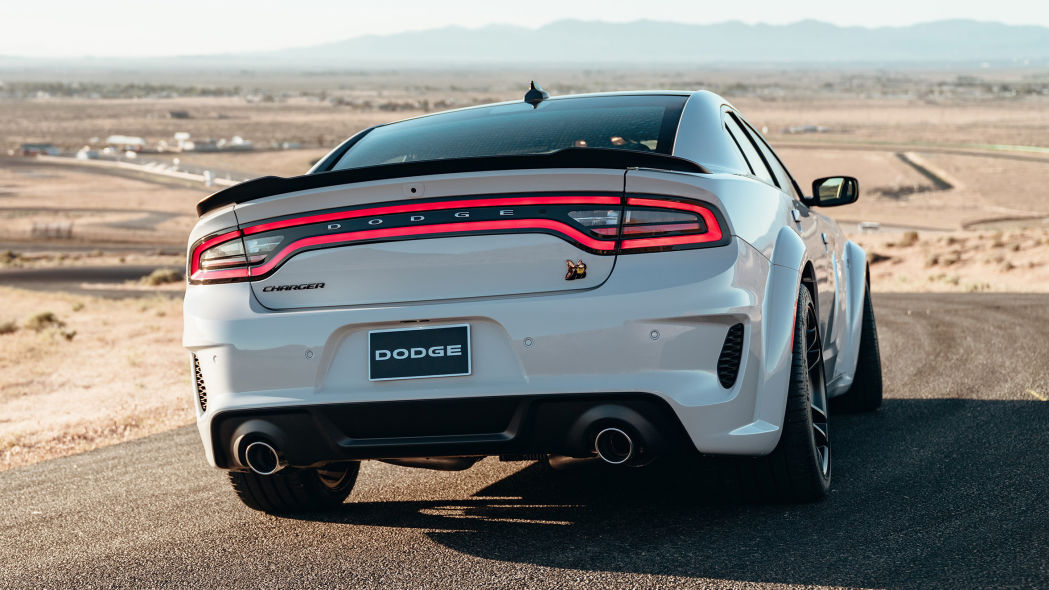
So high are these capabilities that they’re almost a waste on the street. Only top speed is down a bit due to increased wind resistance of the flares and rolling resistance of the tires, now standing at “just” 196 mph (from 198). For those who care (and you probably wouldn’t have read this far if you didn’t), 0-60 now comes up in 3.6 seconds, the quarter-mile in 10.96 seconds, 60-0 braking consumes just 107 feet, and the car can pull. In fact, Dodge claims the Widebody version of the car is slightly quicker 0-60, can stop four feet shorter from 60 mph, and can circle a 2.1-mile road course 2.1 seconds faster, which equates to 13 car lengths per lap.


Also along for the ride is a Bilstein 3-mode electronically damped suspension, the combination bringing better grip in a straight line, during braking, and in corners. This brings fender flares that add 3.5 inches to overall width, which allow for fitment of wider 20-x-11-inch wheels shod with meaty 305-series tires. What changes for 2020 is that the Charger SRT Hellcat adopts as standard the Widebody Package introduced on its Challenger sibling last year. Of course, the qualifier here is “mass-produced,” and an electric-powered Tesla may be quicker, but certainly the SRT Hellcat is among the roomiest rockets you can get for anywhere near its price.

The SRT Hellcat and Scat Pack versions of the Charger look very similar … until you spot the badging.īut that hardly diminishes the appeal of the Dodge Charger SRT Hellcat, which the company bills as “The fastest, most powerful mass-produced sedan in the world.”


 0 kommentar(er)
0 kommentar(er)
